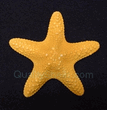How Did Old-time Sailors Know Where They Were On The Ocean? |
Site NavigationHome PageArticles Where do shells come from? Is seawater similar to blood? Picking up seashells What are starfish? Do sharks have skeletons? What are sand dollars? What are seahorses? What are "flying fish"? How navigate on the ocean? More legs than an Octopus? Fish training Can I drink seawater? Additional Resources Seashell Identification Guide Conchologists of America Waikiki Seashells Training Fish Featured Products Marine GPS with MOB Key Privacy Policy Page Contact Us |
How Did Old-time Sailors Know Where They Were On The Ocean? As you know if you've ever been out on a boat, once you lose sight of land everything looks the same in all directions and it's easy to get lost. And at night it's worse. So the earliest sailors just kept in sight of land. That worked for sailing or paddling between closely-spaced islands, or running along a coastline. And it was awfully limiting. Without any other aids, about all one could do is wait until the sun rose or set, and use that to get a good idea what direction was East or West. But if you're out of sight of land, you can easily go in large circles and not realize it, so that wasn't much good. The first useful invention to help was the magnetic compass. With that you could hold a steady direction as you sailed. And with something called "dead reckoning" -- estimating how far you've sailed each hour, or day, or whatever -- a captain or navigator could pretty well keep track of where the ship was. For short trips, anyway. But errors crept in over time, and ocean currents threw the calculations off. And a storm could blow the ship so far off course as to render any estimates of location pretty much hopeless. Even so, the compass and dead reckoning enabled trips of up to a week or two, in good weather. Even back in the time of sailing ships, technology wa the key to knowing where you were. First came the magnetic compass. The next invention needs a bit of explanation first: When sailors talked of a ship's "location" they mean its Latitude and Longitude on the ocean. You've seen those indicated on globes. The "Latitude" lines are those that run horizontally around the globe. The "Longitude" lines are those running vertically from pole to pole. The easy way to remember which is which is that "LATitude" lines are the ones that lie FLAT. Now, suppose you have a compass, and know the date, and have a set of prepared navigating tables showing how high the sun should be at local noon (when the sun is on a line running north and south from where you are) for various latitudes. If you measure the angle of the sun above the southern or northern horizon at local noontime, you can simply look up your latitude by checking in the tables for that date. You need the tables and to know the date since the sun is at different heights above the horizon as the seasons change, due to the earth's tilt in its orbit around the sun. So, that gets you your Latitude, or your distance from the equator. It doesn't tell you anything about your Longitude, where you are along that horizontal line, though. For that you need, oddly enough, a...CLOCK! A very accurate one, as well. Here's why: If you have the accurate time, and more prepared navigation tables, after you determine your latitude, you can measure the height of the sun above the horizon, note the date and the time, and look up your longitude in the navigation tables. As your ship moves East, the sun will appear to rise earlier in the morning and set earlier at sunset. And vice-versa if you've moved West. So the key is, simply, knowing the time. But in the days of sailing ships, that was a large problem! The problem was the accuracy required in knowing the time, so you could figure your true longitude. The earth is about 24,900 miles around at the equator. Since the sun "moves over" the whole 24,900 miles in 24 hours, it's moving at the equivalent of about 1,000 miles per hour, as seen from the ocean's surface. So if your clock is wrong by even one minute, that gives you a position error of 16 miles, near the equator. If your time's wrong by five minutes, you're 80 miles from where you think you are. And so it goes. With an inaccurate clock, you can think you're 100 miles or more -- a good day's sailing -- from landfall, only to smack into land in the dark of night and be wrecked. Or if you were trying to sail through a strait between two islands on a dark night with no moon, you could also run aground and be ruined. So in 1714 the British government offered a prize to anyone who could perfect and demonstrate a clock that would be accurate enough, over long voyages, to give the desired precision in locating a ship. This type of clock was called a "chronometer." Now, this wasn't an easy problem. All the clocks of the time were mechanical. They were upset by changes in temperature, humidity, vibration, corrosion, etc. A shipboard environment was particularly hostile in terms of the rocking of the boat, moisture and saltwater corrosion. And ships of the day were slow, so voyages routinely lasted for months. Or years! The problem wasn't reliably solved until around 1770 or so. And in 1775 Captain Cook returned from a three-year voyage, having used one of the chronometers submitted by its inventor to qualify for his prize on his long trip, with great success. Upon comparing it to local reference clocks it was found to have been accurate to within 8 seconds per day! Nowadays, of course, navigating is much simpler. All large ships today rely on Global Positioning System (GPS) receivers. Marine GPS receivers don't show streets, they give lattitude and longitude, and typically also show maps of any nearby coastlines, harbors, lighthouses, etc. Many also display the approximate depth of the water as well. And modern GPS units make sailing much safer in other ways. Many marine GPS units, for example, now have a "man overboard" ( MOB ) button. If someone falls overboard, the captain or other crewmember presses that button. The GPS unit then "marks that spot" in the ocean, and typically displays a directional arrow pointing to it, along with a distance reading to that spot. That lets the captain turn the ship around and return to the spot where the person fell into the water. That may sound like a small thing, but a person in the ocean, with just his head above the surface, will disappear behind the waves astonishingly quickly. The "man overboard button" has proven to be a real lifesaver. To see a typical GPS system that has that feature, click here: Marine GPS. I suspect most large ships, even now, carry a sextant -- a hand-held instrument used to measure angles between the sun and moon and horizon -- as a backup to their GPS systems. You can see a picture of one of those here: Sextant. With that and an accurate wristwatch and navigation tables, a competent navigator can still find where he is on the ocean, even if the modern GPS unit has failed. |
 Murex Ramosus Seashell  Seahorse  Sand Dollar  Pearl Nautilus Seashell -- Split  Jungle Starfish  Lambis Chiragra Spider Conch Seashell |